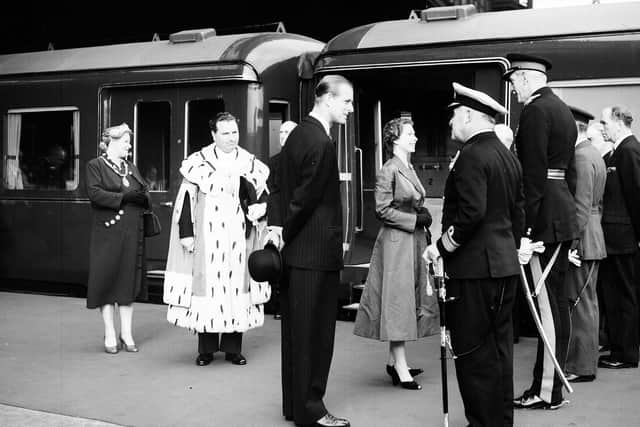Royal Train use falls to new low as Scottish trips decline


An expert predicted the train would eventually be retired to a museum.
The train has also made fewer appearances in Scotland, with a single visit in each of the past two years compared to up to six over preceding years.
Advertisement
Hide AdAdvertisement
Hide AdBy contrast, there were 12 royal flights to or from Scotland last year alone.


According to the sovereign grant report, the Royal Household’s annual financial statement, the train made a total of only three trips in 2019/20, compared to five the previous year, ten in 2017/18 and 14 the year before.
Last year’s trips cost a total of £63,255 in addition to the train’s £300,000 annual running costs.
A further £96,273 was spent on scheduled train travel.
The Royal Train is not thought to have been used since April because of the Covid-19 pandemic, but Buckingham Palace declined to confirm this.


The Prince of Wales has been its main user, including to and from Ayr for visits to his Dumfries House estate near Cumnock.
Phil Marsh, author of The Full Works, about the rail depot at Wolverton in Milton Keynes where the train is based, said: “The latest statistics demonstrate that it is the lowest annual use probably ever.
“Its use has declined due to the age of the principals [those permitted to use the train].


"The Duke of Edinburgh understandably 'retired' a few years ago and the Queen is again understandably carrying out fewer engagements which involve long-distance travel.
Advertisement
Hide AdAdvertisement
Hide Ad"The only other passenger is Charles and he is really the sole user nowadays.
"Once Charles takes a back seat in engagements, handing over to the next generation, that is when we can expect to see the train move to the National Railway Museum.”


Mr Marsh, who also runs the royaltrain.co.uk website, said the fleet had been reduced over the past 15 years, with some carriages sold or scrapped, so only one Royal Train could now be formed operated at one time.
However, he said it remained a valuable asset.
Mr Marsh said: “Some will argue it is an expensive luxury, but when compared to other fully-costed forms of royal travel, it is cheap.
"Royal passengers regard the train as a ‘palace on wheels’ in functionality and not luxury.
"It is a place that is familiar to them, they know how it works, the staff know what is required and the principals can therefore relax in between engagements.”
Buckingham Palace said the train provided an effective and operationally efficient form of travel for certain official engagements.
It said it enabled full programmes of engagements to be carried out which might not be possible using other forms of transport, and also provided secure overnight accommodation, reducing security costs.
Advertisement
Hide AdAdvertisement
Hide AdA spokesperson for Prince Charles said there had been no attempt to reduce use of the train and it would continue to be used when it was the best form of transport for his programme.
A message from the Editor:
Thank you for reading this story on our website.
While I have your attention, I also have an important request to make of you.
With the coronavirus lockdown having a major impact on many of our advertisers - and consequently the revenue we receive - we are more reliant than ever on you taking out a digital subscription.
Subscribe to scotsman.com and enjoy unlimited access to Scottish news and information online and on our app.
With a digital subscription, you can read more than five articles, see fewer ads, enjoy faster load times, and get access to exclusive newsletters and content.
Visit https://www.scotsman.com/subscriptions now to sign up.
Our journalism costs money and we rely on advertising, print and digital revenues to help to support them.
By supporting us, we are able to support you in providing trusted, fact-checked content for this website.
Joy Yates
Editorial Director
Comments
Want to join the conversation? Please or to comment on this article.